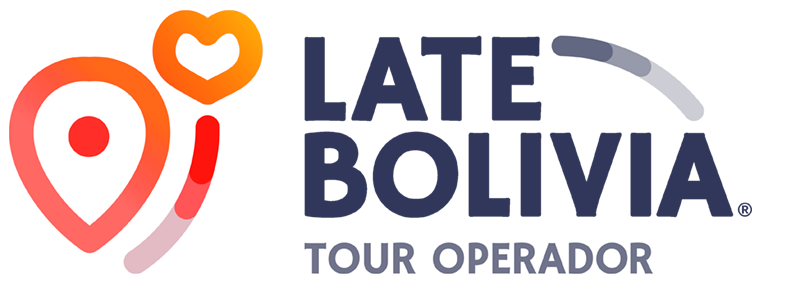Key Points for Entering Bolivia as a Tourist
Visa:
Japanese citizens traveling to Bolivia for tourism and staying for a short period (up to 90 days) do not need a visa. A valid passport is required (at least six months remaining before expiration and at least two unused visa pages).
Yellow Card (Yellow Fever Vaccination Certificate):
Presenting a Yellow Card is not mandatory when entering Bolivia. However, if you travel to yellow‑fever risk areas such as Luribay, Madidi National Park, Trinidad, etc., you must show the certificate.
Note: Visa and entry requirements can change without notice. Before departure, check the latest information on the Ministry of Foreign Affairs website or the Embassy of Japan in Bolivia.
Embassy of Japan in Bolivia: https://www.bo.emb-japan.go.jp/itpr_ja/nyuukoku.html
Bolivia – Basic Information
Language:
Spanish is the main language. Outside tourist zones English is rarely understood, so learning a few basic Spanish phrases and essential words will make your trip smoother.
Area:
Bolivia covers roughly 1.1 million km²—about three times the size of Japan (≈ 380 000 km²).
The Salar de Uyuni spans about 10 600 km², almost the same area as Japan’s Gifu Prefecture (≈ 10 620 km²).
Average altitude of major cities:
| City | Approx. altitude |
|---|---|
| La Paz | 3 600 m |
| Uyuni | 3 650 m |
| Santa Cruz de la Sierra | 416 m |
| Sucre | 2 800 m |
| Potosí | 4 000 m |
Culture & Customs
Bolivia is a plurinational state; many ethnic groups preserve their own traditions. Bright traditional costumes, diverse cuisine, festivals, and dances are iconic symbols of Bolivian culture. Please respect local customs during your visit.
Official name: Plurinational State of Bolivia (Estado Plurinacional de Bolivia).
Altitude Sickness
El Alto International Airport (La Paz) sits at about 4 060 m. Many travelers experience shortness of breath, headache, or other altitude‑sickness symptoms immediately after landing because the rapid rise in altitude reduces oxygen levels.
Altitude sickness commonly appears above 2 500 m. A recommended acclimatization route is:
Santa Cruz (low altitude) → Sucre → Potosí → Uyuni → La Paz
(This itinerary balances travel convenience with gradual elevation gain.)
Advice for High‑Altitude Areas (including La Paz)
- Plan a relaxed itinerary – avoid overly ambitious schedules when starting from high‑altitude locations.
- Stay well hydrated – In Bolivia it is customary to drink coca tea, which is believed to alleviate altitude‑related discomfort (it is a supplemental measure only).
- Do not take coca products out of Bolivia; many countries prohibit them.
- If symptoms persist or worsen, seek medical attention promptly.
- Avoid intense exercise and heavy meals while your body adjusts.
- The digestive system works less efficiently at altitude, so sip fluids frequently and eat lightly.
Coca‑tea warning:
Legal within Bolivia, but illegal in most other nations. Exporting it can lead to confiscation or penalties. Enjoy it only while in Bolivia.
Food Safety
- Do not drink tap water; use bottled water.
- Avoid undercooked foods, raw vegetables, and salads.
- Street food can be tasty but choose vendors with good hygiene standards.
Medications to Bring
- Any regular prescription medicines you use.
- Altitude‑prevention medication (optional; also available in Bolivian pharmacies).
- If you’ll travel to Amazonian regions, bring sunscreen and insect repellent (also sold locally). Bringing familiar brands from Japan is advisable.
Currency, Exchange & Payments
- Currency: Boliviano (Bs or BOB); sub‑unit centavo (C.) exists for amounts below 1 Bs.
- ATMs: Available in La Paz, Santa Cruz, Uyuni, Sucre, etc. Remote towns may lack ATMs, so carry cash when leaving major cities.
- Exchange offices: Found in city centers of the same major cities.
- Payment methods: Visa, Mastercard, and other major cards are accepted in hotels and restaurants in larger cities, but cash is still useful.
Electricity
- Voltage: 220 V (standard).
- Plug types: A (same as Japan) and C.
- Bringing a universal adapter is recommended.
Phone & Internet
Most hotels provide Wi‑Fi, though connectivity can be spotty in the Salar de Uyuni and rural areas. Prepaid SIM cards work for calls and data, but expect similar instability outside urban centers.
Transportation Between Major Cities
- Air travel: Domestic flights last 30–50 minutes. Boliviana de Aviación (BoA) connects La Paz, Santa Cruz, Sucre, Uyuni, etc.
- Long‑distance buses: Travel times vary from 4 to 20 hours depending on the route (e.g., La Paz ↔ Uyuni ≈ 9 h).
Flights From Neighboring Countries (as of 16 Sep 2025)
- Peru ↔ Bolivia: Daily Lima ↔ La Paz/Santa Cruz; several weekly Cusco ↔ La Paz.
- Colombia ↔ Bolivia: Daily Bogotá ↔ La Paz/Santa Cruz.
- Argentina ↔ Bolivia: Several weekly Buenos Aires ↔ Santa Cruz.
- Brazil ↔ Bolivia: Several weekly São Paulo ↔ Santa Cruz.
Schedules may change seasonally or per airline.
Recommended Route from Japan to Bolivia
Depart from Narita, Haneda, or Kansai → USA (Los Angeles or New York) → Peru (Lima) → Bolivia (La Paz or Santa Cruz).
- Multiple Japanese carriers fly to the U.S.
- LATAM provides convenient connections from the U.S. to Lima and onward to Bolivia.
- BoA also operates a few weekly Lima ↔ La Paz flights.
Other North‑American options
- Japan → Dallas → Miami → Santa Cruz → La Paz
- Japan → Toronto → Lima → La Paz / Santa Cruz
Safety in Bolivia (2025)
According to the World Population Review peace index, Bolivia ranks among the top five safest countries in South America and sits at 68 out of 163 worldwide—slightly above the global average. Iceland is #1; Japan ranks #17.
City‑specific safety
- La Paz: Tourist areas are generally safe; stay alert in crowded markets and bus terminals.
- Santa Cruz: The economic hub; central districts and hotel zones are busy and relatively safe.
- Uyuni: Small, orderly town; hotels, travel agencies, restaurants, and cafés are welcoming and secure.
- Sucre: Constitutional capital; historic and tranquil, with a moderate altitude (~2 800 m) that eases altitude‑sickness concerns.
Possible Issues
Protests and road blockades occur across Bolivia, especially in La Paz where many government offices are located. LATE BOLIVIA continuously monitors the situation, provides up‑to‑date safety information, and prioritizes traveler security with swift, appropriate responses.
About LateBolivia
Tour Formats
Individual Tour – You can choose either a packaged tour or a fully customized “made‑to‑order” tour that we design based on your wishes and preferences, taking care of every detail. We also arrange tours or hotels separately if you prefer. We are flexible and happy to accommodate any request, so please feel free to get in touch.
Group Tour – Small‑group tours limited to 4 – 8 participants. These are offered at a lower price than individual tours.
Tour Options
Photography session at Salar de Uyuni – You can have a professional photo shoot against the backdrop of the Salar de Uyuni conducted by renowned photographer Anderson Takara. High‑quality souvenir photos will be provided.
Emergency Contact Numbers
-
Tour‑related emergencies: LATE BOLIVIA +591 7153 8347 (available 24 hours)
-
Passport loss or theft: Embassy of Japan in Bolivia (La Paz) +591 2 241 9110
-
Other domestic emergency numbers in Bolivia
| Service | La Paz | Santa Cruz |
|---|---|---|
| Police | 110 | 167 |
| Ambulance | 118 | 119 |
| Fire brigade | 110 | 167 |
Contact Information
- Website: www.latebolivia.com/jp
- E‑mail: info@latebolivia.com
- LINE: +591 7153 8347 (Add as a friend → Search → Phone number)
LATE BOLIVIA is dedicated to supporting your trip in Bolivia. Feel free to reach out to us anytime.



